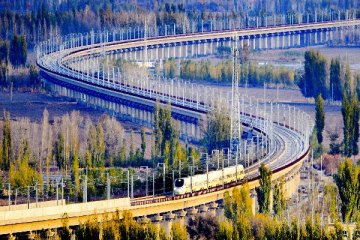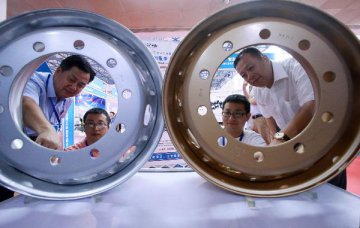
Growth in China’s fixed-asset investment and consumption continued to drop in July, while growth in manufacturing investment and private investment kept recovering and industrial production went smoothly. Analysts believed that the continuously stable economic fundaments maintained unchanged, and China’s economy is very likely to move up stably in the second half of this year.
Both growth in investment and consumption declines
China's fixed-asset investment rose 5.5 percent year-on-year in the first seven months of the year, down by 0.5 percentage points from 6 percent for January-June, data from the National Bureau of Statistics (NBS) showed Tuesday. The growth hit the new low since 1995.
Infrastructure investment accounted for about a quarter of total investment and the continued decreasing infrastructure investment was the major contributor to the dropping total investment, Zhang Liqun, researcher from Development Research Center of the State Council, said to the reporter in an interview.
Statistics showed that infrastructure investment climbed by 5.7 percent during January and July from the same period of last year, with the growth down by 1.6 percentage points from that in January-June period.
However, NBS spokesman Liu Aihua pointed out at the press conference of Information Office of the State Council yesterday that infrastructure investment is expected to keep stable as policies are put into place and projects will see faster approval in the second half of this year.
Zhang June, chief economist from Morgan Stanley Huaxin Securities, said that the loosening monetary policy has taken effect, and interbank interest rate has plummeted significantly since the second quarter. The country will focus on unclogging monetary policy transmission mechanism so as to guide liquidity into the real economy. It was raised at the meeting of the CPC Political Bureau to make more investment in infrastructure so as to improve the weak links. Increasing infrastructure investment is expected to be a priority in the second half.
In addition, consumption growth fell by 0.2 percentage points from June to 8.8 percent in July, failing the expectation.
In the opinion of Zhang, the slower consumption growth in July was resulted from some short-term factors like negative growth in automobile consumption. However, as the momentum with upgrading consumption structure hasn’t changed, consumption will keep stable development in the next half of this year.
Stable economic fundamentals keep unchanged
Despite fluctuation in macro data in July, dominating economic activities are still recovering, implying no change in the stable economic fundamentals.
For instance, growth in manufacturing investment and private investment both kept hiking. Statistics showed that growth in manufacturing investment has picked up for four consecutive months. It grew by 7.3 percent during January and July, 0.5 percentage points faster than that in the January-June period. Private investment rose by 8.8 percent year on year, up by two months consecutively.
“Recovery in increase in manufacturing and private investment implies optimization in investment structure and improvement in endogenous engine structure,” said Liu.
Zhang analyzed that despite downward pressure on economy, the economic fundamentals are still being improved. As a series of policies of stabilizing economic development and investment will be put into place, China’s economy is largely likely to see stable growth and structure upgrading will be accelerated in the second half of the year.
According to NBS, the added value of industries above a designated scale gained by 6 percent in July, keeping flat with June. Added value of high-tech manufacturing, equipment manufacturing, strategic emerging industries moved up by 11.6 percent, 9 percent and 8.6 percent respectively, remarkably higher than the growth in production of overall industry.
Zhang June viewed that rapid development of high-tech industries means that industry structure keeps being optimized driven by demand and supply amid economic transformation.
“The momentum with stable industrial operation hasn’t changed. Upgrading of industrial structure give more support to industrial production development, and basis is being improved,” Zhang Liqun added.
Liu pointed out that the stable economic operation in the first seven months lays solid foundation for economic trend in the future. In view of no matter supply side or demand side, China’s stable economic fundamentals won’t change, nor will the momentum of better upgrading and structure adjustment.
Translated by Vanessa Chen





















Latest comments